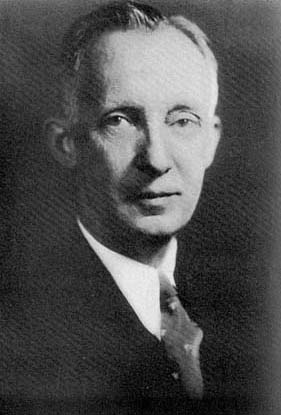Ashe, William Willard
4 June 1872–18 Mar. 1932
 William Willard Ashe, forester, dendrologist, and conservationist, was born at Elmwood, the family home in Raleigh. The oldest of nine children of Samuel A'Court Ashe and Hannah Emerson Willard Ashe, he was a descendant of Samuel Ashe, North Carolina governor from 1795 to 1798, and the grandson of William Shepperd Ashe, U.S. congressman from 1849 to 1855. After being tutored by his mother and great-aunt, he entered Raleigh Male Academy at the age of twelve. At The University of North Carolina, he joined the SAE fraternity and was graduated in 1891 with the degree B. Litt; he received the M.S. degree from Cornell University in 1892. He concentrated his studies in botany and geology and pursued an interest in ornithology, creating an unusually large collection of bird eggs and stuffed birds. He later formed extensive herbariums in Raleigh and in Washington, D.C.
William Willard Ashe, forester, dendrologist, and conservationist, was born at Elmwood, the family home in Raleigh. The oldest of nine children of Samuel A'Court Ashe and Hannah Emerson Willard Ashe, he was a descendant of Samuel Ashe, North Carolina governor from 1795 to 1798, and the grandson of William Shepperd Ashe, U.S. congressman from 1849 to 1855. After being tutored by his mother and great-aunt, he entered Raleigh Male Academy at the age of twelve. At The University of North Carolina, he joined the SAE fraternity and was graduated in 1891 with the degree B. Litt; he received the M.S. degree from Cornell University in 1892. He concentrated his studies in botany and geology and pursued an interest in ornithology, creating an unusually large collection of bird eggs and stuffed birds. He later formed extensive herbariums in Raleigh and in Washington, D.C.
In 1892 he was appointed forester in the North Carolina Geological Survey. Ashe and the other members of this select group made North Carolina the pioneer state in southern conservation. As part of their campaign to advertise the state's resources and encourage efficient use and long-range planning, Ashe and Gifford Pinchot surveyed the state's forests; the surveyors published their report in 1897 as Timber Trees and Forests of North Carolina. While secretary-treasurer of the first North Carolina Forestry Association, Ashe campaigned to reduce forest fire destruction and emphasized the economic value of the state's forests.
In 1905 he joined the U.S. Forest Service, holding successively the ranks of forest expert and forest assistant, assistant district forester, and senior forest inspector. Participating in the government's purchase of Forest Reserve lands under the Weeks Act of 1911, he became perhaps the most skilled appraiser of the value of eastern timber lands, by one estimate saving the government over a million dollars. At the time of his death he was chief of the Forest Service's land acquisition force for the national forest region of the eastern and southern states. His studies in logging and lumbering resulted in extensive savings in this southern industry. He was among the first to call for the preservation of wilderness areas, in a 1922 article "Reserved Areas Of Principal Forest Types As a Guide in Developing an American Silviculture," Journal of Forestry 20:276–83.
Impressive scientific achievements mark his work in forestry and botany, despite the time he gave to administrative duties. His experiments with the cup and gutter system of turpentine gathering contributed to the later adoption of this more efficient and less destructive technique. He perfected the method of commercial growing of longleaf pines. His writings include 167 titles in such fields as forest economics, influences, legislation, management, and research; land acquisition for public forest and parks; systematic botany and dendrology; and soil erosion. Ashe published 510 new botanical names, mostly southeastern, in 35 genera, including many new species. Over a dozen species and varieties commemorate his or his wife's name.
Ashe was a member of the Torrey Botanical Club and of the Society of American Foresters, serving as the society's vice-president in 1919. He served the National Forest Reservation Commission as secretary and editor from 1918 to 1924. He was appointed to the Forest Service Tree Name Committee in 1928 and was its chairman from 1930 until his death.
Ashe was a Democrat and an Episcopalian. He married his widowed distant cousin, Mrs. Margaret Henry Wilcox, in 1906; they had no children, although his wife had children by her previous marriage. Ashe died in Washington, D.C., following the third operation for a hernia contracted on a field trip. He was buried in Oakwood Cemetery in Raleigh.
References:
American Men of Science, 1st and 3rd eds. (1906, 1927).
William Willard Ashe Papers (Southern Historical Collection, University of North Carolina, Chapel Hill).
Hannah Willard Ashe Bason (Raleigh), personal contact.
William A. Dayton, William Willard Ashe (1936 [portrait and bibliography]).
Journal of Forestry 30 (1932).
44 (1946 [portrait]).
Raleigh News and Observer, 19 and 21 Mar. 1932.
Additional Resources:
William Willard Ashe, iBiblio, UNC: http://www.ibiblio.org/unc-biology/herbarium/collectors/ashe.htm
W. W. Ashe Papers, 1859-1932 (collection no. 00028). The Southern Historical Collection. Louis Round Wilson Special Collections Library. University of North Carolina at Chapel Hill. http://www.lib.unc.edu/mss/inv/a/Ashe,W.W.html (accessed January 31, 2013).
William Willard Ashe : a forestry builder : symposium of expressions relating to his life and achievements.
By Wilbur R Mattoon. The Internet Archive: https://www.worldcat.org/title/william-willard-ashe-a-forestry-builder-symposium-of-expressions-relating-to-his-life-and-achievements/oclc/316799051
William Willard Ashe in the Internet Archive: https://archive.org/search.php?query=creator%3A%22Ashe%2C%20W.%20W.%20%28William%20Willard%29%2C%201872-1932%22
William Willard Ashe Article in UNC Digital Collections: http://dc.lib.unc.edu/cgi-bin/showfile.exe?CISOROOT=/jncas&CISOPTR=1561
William Willard Ashe in the UNC Herbarium: http://www.herbarium.unc.edu/Collectors/ashe.htm
Image Credits:
Courtesy of The University of North Carolina Herbarium. Available from http://www.herbarium.unc.edu/Collectors/ashe.htm (accessed January 31, 2013).
1 January 1979 | Bedingfield, Frank, V